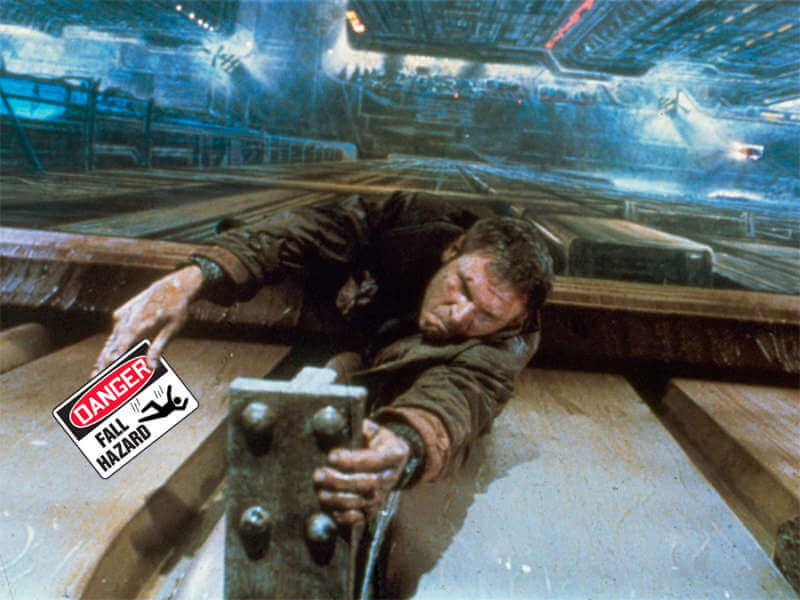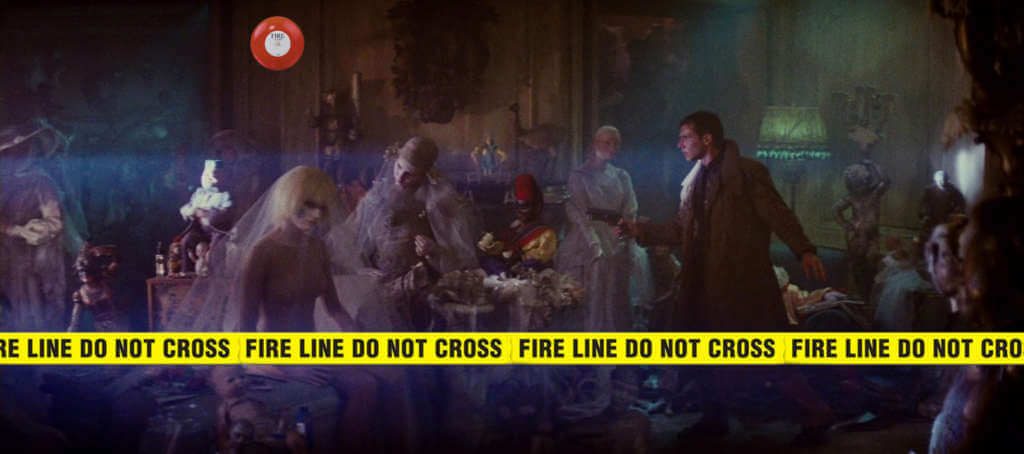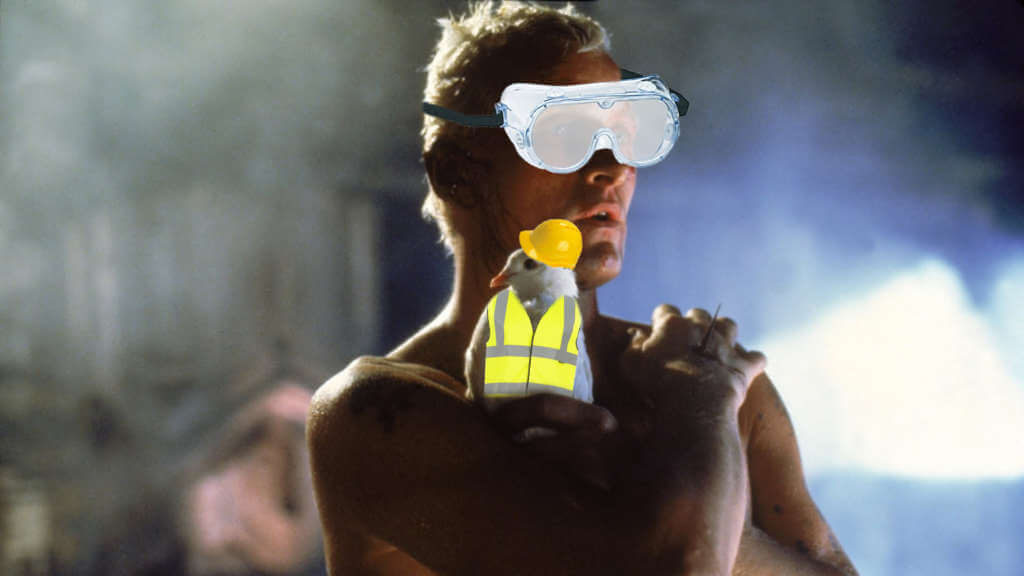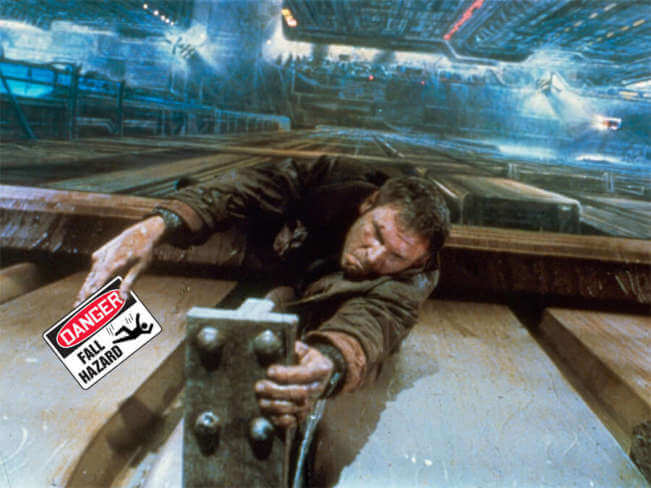
Back by popular demand, we’re turning our ever vigilant eye to a true classic of sci-fi cinema. We’ve seen the new one (it’s great), but to avoid ruining things, here’s a rundown of seven health and safety risks that really stood out in 1982’s Blade Runner.
[[Spoiler warning -- plot details from a 30 year-old movie incoming]]
Eye, Robot
One of Blade Runner’s early scenes sees us descend into an underground lab for a particularly creepy rendezvous. Two of the escaped replicants arrive to interrogate a hapless backstreet scientist, who apparently grows their eyes.
The scientist clearly knows about PPE legislation, but doesn’t quite know what to do with it. A heated suit and gloves are matched with zero face protection, and apparently minimal COSHH awareness.
More concerning is the replicants decision to dunk their hand in liquid nitrogen, which sets an extremely dangerous example for kids in synthetic eye labs everywhere. You might even say they need an Eye-OSH course…
Severity: 7/10
Window Dressing
Protagonist Deckard’s hunt for the replicants leads him to a gentleman’s club, and a particularly risque performer. Before we get a good look at the fire exits, Deckard realises that the performer is a replicant, and pursues her into the street. He takes a few potshots, and she swan-dives through some strategically placed glass boxes.
We’ve got no idea what’s going on here. The first box is full of underwear-modelling mannequins and a single sofa, while the next one is full of snow. If they’re display cases, who in this slum is paying for them? What are they advertising? Why aren’t they part of a store? We could complain about them not being shatter-proof, or the use of firearms in a public place, but the logic is more offensive.
Severity: 3/10
Electric Dreams
Neo-noir films love rain, and Blade Runner has it by the bucketload. Deckard seems to wade his way through every scene, whether it’s out in the storms of the city streets, or plodding through a sodden apartment block. Earth’s meant to be poor, but we’ve never seen streets with better drainage.
There’s one obvious problem with all of this water: electricity. The world of Blade Runner is chock-a-block with neon signage, trams, flying cars, and all manner of electronic gizmos. The buildings are falling apart, and we’re meant to believe that their appliance testing is up to scratch? Apart from anything, it’s hard to trust the longevity of billboards for Pan Am and Atari…
Severity: 5/10
Retro Inferno

Having interrogated the eye doctor, the replicants next lead is a genetic engineer called JF Sebastian, with his own genetic condition. The rapidly ageing prodigy lives in a dimly lit fantasia, filled with living toys. The soldiers and teddy bears move like clockwork, but have distinctly creepy human faces.
This is the safety inspector’s apartment from hell. The complete absence of lighting and masses of clutter make every object a trip and fire hazard. There’s machinery all over the place, and the door is quintuple locked, with no reliable fire exit. This is not to mention the futility of having all those locks and then letting random people into your house. We need to go and calm down…
Severity: 9/10
Tyrell That Ends Well
With only two replicants surviving, they coerce Sebastian into accessing the company’s main elevator. Tyrell, the replicants’ designer, lets the group into his penthouse suite in the dead of night with few questions, and no security presence.
Here’s a tip for all aspiring billionaire inventors whose creations are out to kill them: don’t sanction random midnight visits. Or to look at it another way: don’t give someone the keys to your premises because you fancy a game of chess.
Severity: 7/10
Running The Risk

Blade Runner’s famous ending takes the form of a chase sequence, where Harrison Ford’s character climbs and leaps across rooftops. The bleach-blonde Rutger Hauer follows him step for step, and saves him from falling to deliver the real killer blow: his monologue.
We’ve never seen such a flagrant breach of work at height regulations. There’s no scaffolding, there are no guard rails, and it’s raining. Ford has already been injured, too, marking him ‘not competent’ under the 2005 Act. On the other hand, we don’t really know how much damage a replicant takes from falling, and it’s never not raining. Mark this down as a solid ticking off’.
Severity: 6/10
Time…To Die
As Ford’s character begins to slip off the roof, Roy the replicant saves him, and drags him up onto the metal panels. Ford, soaked and wounded, drags himself backwards across the rusty roof, and props himself up against a stone pillar.
Ford is clearly dazed and confused in this scene, but there can be no excuse for the blatant disregard for his own personal safety. He drags himself across a rusty, plant-strewn roof multiple times, scraping against dozens of metal rivets. No wonder Roy decided to give his famous monologue — tetanus should have done the work for him.
Severity: 10/10

